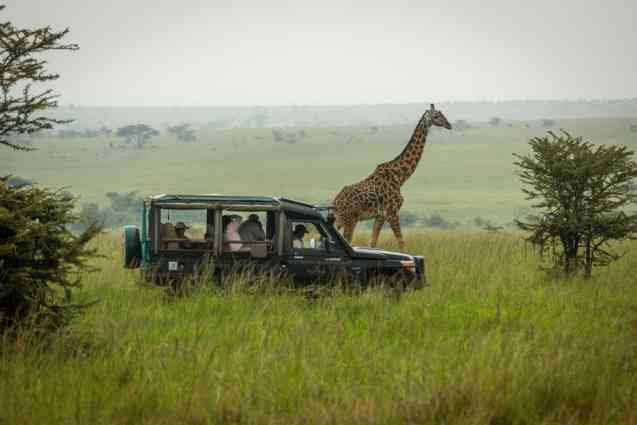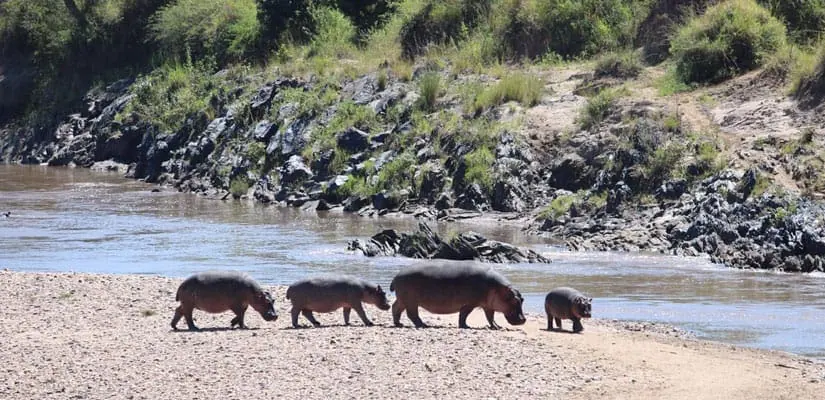- GET IN TOUCH WITH US:
- +256 753518160
- +256 777842166
- info@experiyatourcompany.com

How far in advance should I book a Kenya safari?
November 19, 2025Are domestic flights reliable between Kenyan parks?

Are Domestic Flights Reliable Between Kenyan Parks?
For many travelers planning a safari in Kenya, one of the biggest questions revolves around logistics: Are domestic flights reliable between Kenyan parks? With Kenya’s vast landscapes spread across hundreds of kilometers—from the savannahs of the Maasai Mara to the forests of Amboseli, the arid beauty of Samburu, and the volcanic plains of Tsavo—domestic flights offer the quickest and most efficient method of travel. But how dependable are these flights? How often do they operate? And what should safari-goers know before booking?
The good news is that Kenya’s domestic flight network is one of the strongest and most reliable in East Africa. It allows travelers to hop between national parks comfortably and safely, saving time and maximizing time spent in the wilderness. In this guide, we explore the reliability of domestic flights between Kenya’s parks, schedules, service levels, aircraft types, weather considerations, luggage limits, typical delays, and what travelers can expect when flying between safari destinations.
By the end, you’ll have a clear understanding of how domestic flights work, whether they suit your itinerary, and how to plan a seamless safari using air transfers.
Why Domestic Flights Are Popular for Safaris in Kenya
Kenya is a country of immense landscapes. Traveling by road between parks can take anywhere from 4 to 10 hours, depending on the destination. Domestic flights reduce this to 45 minutes to 1.5 hours.
Air transfers are especially beneficial for:
Travelers with limited time
Families with children
Honeymooners seeking comfort
Luxury travelers transitioning between high-end lodges
Photographers with tight schedules
Guests connecting to the coast (Diani, Lamu, Watamu)
Flying between parks allows you to spend your days watching wildlife—not sitting in a car.
How Reliable Are Domestic Flights in Kenya?
One of the biggest concerns travelers have is whether these domestic bush flights run on time and operate safely. The answer is yes: domestic flights in Kenya are generally very reliable.
1. Strong Aviation Infrastructure
Kenya has an established network of airstrips located inside or near national parks. Popular safari destinations like the Maasai Mara, Amboseli, Samburu, Diani, Tsavo, and Laikipia are easily accessible by air.
2. Experienced Safari Airlines
Several reputable airlines operate Kenya’s domestic safari circuits, including:
Air Kenya
Safarilink Aviation
Fly540
Mombasa Air Safari
Tropic Air (charters)
These operators have years of experience transporting safari travelers, guides, lodge employees, and supplies.
3. Frequent Scheduled Flights
Between major parks, flights operate daily—and sometimes multiple times per day—especially to and from:
Maasai Mara
Amboseli
Samburu
Nanyuki / Laikipia
Diani Beach
Lamu
Tsavo
This frequency makes planning easy and flexible.
4. Good On-Time Performance
Domestic safari flights generally depart on time or within reasonable margins. Delays are minimal and usually relate to weather, airstrip conditions, or the logistics of multi-stop routes.
5. Safety Standards Are High
Kenya’s Civil Aviation Authority enforces stringent safety regulations. Aircraft undergo regular inspections, and pilots are extensively trained for bush flying.
What to Expect When Flying Between Kenyan Parks
While reliable, safari flights are different from international or large domestic flights. Here is what travelers can expect:
1. Small Aircraft
Most safari flights use:
Caravans (10–12 passengers)
Twin Otters (15–20 passengers)
Cessna 206/208
These aircraft are ideal for short bush landings.
2. Multi-Stop Routes
Flights often operate like a “bush bus,” making several stops to pick up or drop off passengers at different airstrips. This is normal and part of the bush flying experience.
3. Scenic Flying
Flying between parks is incredibly beautiful. You’ll see:
Mount Kenya
Rift Valley escarpments
Rolling savannahs
Volcanic landscapes
Lakes and rivers
Elephants, giraffes, and herds of animals from above
Many travelers consider the flights part of the safari adventure.
4. Light Luggage Requirements
Most airlines allow only 15 kg (33 lbs) of luggage in soft bags. This is due to aircraft size and weight limits. Lodges often provide laundry service, so packing light is easy.
5. Flexible Boarding Processes
Airstrips are simple dirt or murram runways. Boarding is casual and quick—no long queues or major delays.
6. Flights Operate During Daylight Hours Only
Bush flights do not operate after sunset. Afternoon fog, rain showers, or cloud cover may occasionally delay flights for safety reasons.
 Common Questions About Flight Reliability in Kenya
Common Questions About Flight Reliability in Kenya
Are there cancellations?
Cancellations are rare. They usually occur only during severe weather or unexpected runway issues. When this happens, airlines rebook passengers or arrange alternative routing.
Are delays common?
Small delays (10–40 minutes) can occur due to:
Morning fog
Heavy rain in April–May
Aircraft rotation
Additional bush stops
These delays are normal and generally manageable.
Is safety ever compromised?
Kenyan safari airlines maintain strong safety records. Flights do not operate in risky conditions. Pilots are well-trained in short-runway takeoffs, crosswinds, and bush landings.
How are weather conditions handled?
If visibility drops or runways become muddy, airlines may adjust timing. Safety always comes first.
Will my flight directly connect between parks?
In many cases, yes. However, some routes require flying via Nairobi’s Wilson Airport for a connection.
Examples of direct park-to-park flights:
Maasai Mara → Amboseli
Samburu → Mara
Nanyuki → Mara
Diani → Mara
Amboseli → Tsavo
Your safari planner will help schedule the most efficient route.
Advantages of Domestic Flights for Your Safari
Saves Time
A drive from Nairobi to Maasai Mara takes 6 hours. A flight takes 45 minutes.
Enhances Comfort
Avoiding long road journeys means you start and end each day relaxed.
Offers Scenic Views
You see landscapes from a breathtaking aerial perspective.
Improves Itinerary Flow
You can easily combine multiple parks in one trip, such as:
Mara + Laikipia
Amboseli + Tsavo + Diani
Samburu + Mara + Lamu
Perfect for Luxury Travelers
High-end lodges often include airstrip transfers, making flights smooth and convenient.
Are Domestic Flights Worth It?
Absolutely. Flying between parks:
Maximizes wildlife time
Reduces travel fatigue
Supports smoother connections
Provides aerial photography opportunities
Allows more varied safari circuits
For most travelers—especially those on tight schedules—domestic flights are the best way to explore Kenya’s safari destinations.
Tips for Smooth Domestic Travel
Book flights early, especially during migration season
Use soft-sided luggage under 15 kg
Arrive at airstrips at least 30 minutes before departure
Communicate special needs (wheelchairs, cameras, etc.) in advance
Let your safari planner coordinate all airport transfers
Always carry valuables and documents in your hand luggage
When Domestic Flights Are Most Reliable
January–March: Clear skies and stable weather
June–October: Peak safari season, dependable schedules
December: Good flying conditions
Rainy months (April–May, November) may see delays, but flights continue unless visibility is unsafe.
Who Should Choose Domestic Flights?
Honeymooners
Photographers
Families
Luxury guests
Travelers with limited vacation time
Those visiting multiple parks
Beach + safari travelers
Anyone wanting convenience, comfort, and time efficiency will benefit.
Final Verdict: Are Domestic Flights Reliable Between Kenyan Parks?
Yes—domestic flights in Kenya are highly reliable and an excellent choice for safari travel. While occasional delays occur due to weather or bush logistics, airlines maintain strong safety standards, frequent schedules, and dependable service.
These flights allow travelers to explore Kenya’s best safari regions efficiently and comfortably, making multi-destination safaris easy and exciting.
Book Your Safari With Experiya Tour Company
If you want a seamless safari with reliable domestic flights, expertly arranged routes, and handpicked lodges, book your adventure with Experiya Tour Company. Their specialists coordinate all flights, airstrip transfers, luxury accommodations, and park connections to ensure your safari flows effortlessly. With Experiya, you enjoy world-class planning, personalized service, and unforgettable wildlife experiences across Kenya’s national parks.



